Part 1 – City Sightseeing and Castle Tour
Following a long, Covid-induced hiatus, Kathrin and I were once again on the road. After considered several destinations both near and far, we decided to stay closer to home and spent 6 days in Bruges. We were there once before, but only for a night or two, and agreed that it was worth a closer look. Researching online, Kathrin found a few interesting bike routes in the area – to some castles, and to North Sea beach spots. So, we had a loose plan. Explore Bruges, bike around the area, spend a day in Ghent – just an hour’s drive away, and on the way back home stop at a friend’s house for a night.
Unfortunately, the weather forecast called for rain during our entire stay, which turned out to be mostly true. We left the partially overcast skies of Frankfurt on Friday morning. Along the way, the clouds opened up, and some sunshine broke through here and there, but then, as we came within about 50 miles of Bruges, a light rain started. Fortunately, it stopped once we arrived at our hotel, B&B Saint George.
The B&B impressed us from the moment we walked in the door. The regal purple furniture in the breakfast room and reception, our light purplish gray room with purple bed quilt and chairs, the modern, high-tech lighting and controls all made for a great first impression. We were constantly admiring the care and attention to detail that went into this accommodation. It’s a family owned and run business, so we got to know Maarten and Olga during our stay. Olga cooked breakfast for us each morning and let me tell you, she is an excellent cook. The croissants were fantastic; the eggs were not only delicious but also nice looking. She really puts a lot of effort into making her guests feel special.
After we settled in and finished admiring our room, we went out for an initial walk around town. Our first stop was the historic city center, which is dominated by the Belfort and Stadshallen (Belfry and hall). The buildings are part of an impressive thirteenth-century halls complex. In the Middle Ages, they used the hall for storing and displaying the much-coveted Flemish cloth, as well as other goods. Today, they use the former sales hall for events, exhibitions, and trade fairs. In its present form, the belfry comprises 3 sections. The bottom two square sections were built in the 13th century. The top octagonal lantern tower was built between 1482 and 1486.
Belfries are typically found in Flanders, Northern France, and in parts of Wallonia, in the south of Belgium. In 1999, UNESCO included 32 Flemish and Walloon belfries on its world heritage list as a testimony to the prosperous and autonomous late-medieval cities in the region.
We eventually wandered further north and into the Jan van Eyck Square. It’s at the end of a canal and there we found a nice little restaurant called the Bistro de Schilder. It has a pleasant view of the square and the historic buildings opposite. Amongst them is the Tolhuis (Old Toll House), which dates back to the Middle Ages when it served as a toll collection point for ships coming into Bruges for international trade. The building facade is quite nice and at the far end is the Coat of Arms of Pieter van Luxemburg, a knight from the Order of the Golden Fleece who rebuilt and owned Tolhuis in the 15th century. We didn’t know it, but at the end of the 14th and beginning of the 15th century, this area was the commercial heart of Bruges, where the international trade took place, and dockworkers loaded and unloaded ships. It was the Manhattan of Bruges.
The restaurant offered some tempting local dishes, and we decided on a beef stew with croquettes. To wash it down, we ordered 2 glasses of the local brew, Brugge Zot Doppel, a dark, tasty beer. Beef stew, tender morsels of meat cooked in a delicious sauce flavored with a local beer, is Belgium’s answer to Beef Bourguignon from France. We really enjoyed it. Croquettes are another traditional food here and come in several varieties – basic potato croquettes, salmon croquettes, crevettes croquettes (tiny gray shrimps from the North Sea), cheese croquettes… (hmmm, do I sound like Buba talking to Forrest Gump?) We had the basic potato variety. We were very satisfied with ourselves as we sipped the last of our beers. An excellent restaurant in a wonderful location with good food and drink, an enjoyable way to end our first day in Bruges!
Once back at our royal suite, I had a brief rest and, as Kathrin was winding down to go to sleep, I went out for an evening photo walk, something that became a habit for me during our stay. I got to know Bruges’ streets very well, and got some great golden hour, and blue hour photographs of the city. Once the sun finished painting the evening sky, I made my back to our room and quietly slipped into bed.
The next morning, Olga was waiting for us in the breakfast room. Bread, yoghurt, and muesli were already on the table. Once we sat down, she brought the coffee and tea and began cooking the eggs. Everything was delicious, and we felt so spoiled!
Our plan for this day was to explore Bruges. The weather forecast was not very good, so staying in town seemed like a smart idea. We could always hide in a café if it rained. We did some geocaching along the way and discovered a few interesting places. One such place was Saint-John’s Hospital, one of the oldest preserved hospital buildings in Europe. The old infirmary took patients in from the 12th to the middle of the 19th century. Initially, anyone in need of food or a bed could come here. However, the nuns had limited medical knowledge and devoted themselves mainly to the care of the soul. In the 19th century, the hospital moved to a nearby building, where patients could go until 1978.

The romantic Bonifacius bridge, also named “The Bridge Of Love”, takes its name from the Holy Bonifacius, whose physical remains are in the Church of Our Lady nearby. Many think this is Bruges’ oldest bridge, but in fact, it is one of the youngest and dates back to 1910. No matter its age, it is a scenic spot that attracted many people looking for a romantic location for a selfie.
As we walked around town, enjoying the sights, Mother Nature rewarded us with mostly dry weather. The morning was overcast, but by afternoon the clouds had broken up. By lunchtime the weather wasn’t a concern, so we sat outside at an Italian restaurant where we shared a caprese salad and a pizza. We both enjoyed it.
After lunch, we continued with more geocaching and sightseeing. One of the nice things about geocaching in a new city is that it brings you to places you might not otherwise have found, or it offers a history lesson about a well-known spot, like a tour guide. That’s how we came across the Basilica of the Holy Blood. A church that supposedly has a drop of Jesus’ blood. Unfortunately, it was not on display during our visit. Still, the church’s architecture was interesting.
A geocache also led us to the Minnewater Bridge. According to legend, when the Romans had begun the conquest of Gaul, an old sailor had said goodbye to the sea and lived with his beautiful daughter Minna on the banks of the river Reie, in Bruges. In these days it was a small, beautiful settlement surrounded by forests and swamps. Because he felt he had not much longer to live, he worried about the future of his daughter and so was keen to see her marry as soon as possible. He even had a future husband in mind, Horneck, a young fisherman from a nearby settlement he occasionally went to visit.
Minna, however, had fallen in love with Stromberg, a young farmer from a neighboring tribe. She did not tell this to her father, because she knew he hated the neighboring tribe. To not arouse suspicion, she kept on postponing her wedding again and again. When the Romans finally invaded the country, the warriors of all tribes went to war, including Stromberg’s. He also went to fight, promising Minna he would come back to marry her. The old fisherman saw his chance to break Minna’s stubborn will, and he decided that on the third sunrise she would marry Horneck. Minna was so torn between her promise to Stromberg and the will of her father that she cried for two nights, and on the third morning she went missing. She wandered along the banks of the Reie until finally she collapsed, exhausted.
Sometime later, the war with the Romans had ended, and Stromberg returned to his beloved Minna. When he discovered that she had gone, he began a painstaking search. Eventually he found her, hidden in thick undergrowth on the banks of the river. However, she was too exhausted and got sick; she died in the arms of her lover. At first Stromberg wanted to take his own life, but he decided to honor his beloved Minna. He built a dam in the river to dry out the middle. On the dry bedding, he made a grave where he laid his love to rest forever. Then let the water back in again. On the bank where he had found Minna, he placed a heavy rock on which he engraved “Minna water”.
Where once stood the stone, now stands the ‘Poertoren’, a tower, and where the damn once stood is now the Minnewater Bridge. It is said that when you whisper her name close to the water, you can sometimes see her face below the surface, searching for her beloved Stromberg.
After a full and satisfying day of touring Bruges, we headed back to our hotel. The sky was getting to be a bit more overcast, but I was still confident that golden hour would be beautiful. As I went out for my evening photo walk, I focused on a different part of town, an area called Huidenvettersplein (“Tanners’ Square”.) During the Middle Ages, this was the site of leather processing. Today, it has several restaurants and cafes, where, every evening, people come to watch the sun disappear behind a beautiful canal scene. I decided to wait for golden hour at Brugge Die Scone, a brasserie that offered a perfect view of the scene. Being alone, I took the opportunity to try some of Belgium’s seafood offerings and ordered shrimp croquettes and a Brugge Zot Blonde, the fair-haired twin of yesterday’s Doppel. As I sat there enjoying the scene of people coming and going, I noticed the enthusiasm of the head server. This was a guy who really enjoyed his job. He was friendly, attentive, and engaging with everyone. He offered a bit of entertainment for me as well. Later, while I was paying, I told him how impressed I was and, after thanking me, pointed out that he had a very nice boss who just happened to be sitting inside the restaurant enjoying dinner with friends.
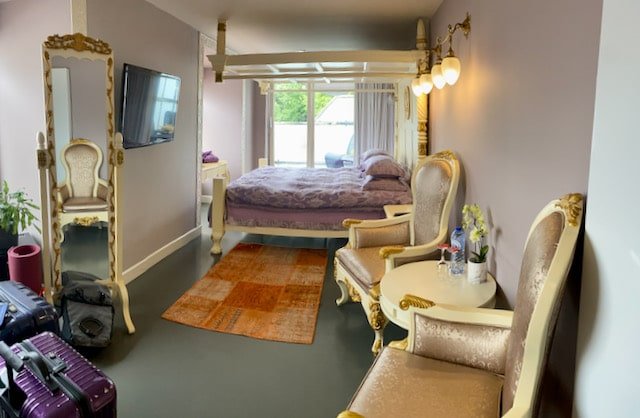
_op_de_Markt_3e_poging_foto2_2015-09-28_19.39.jpg)

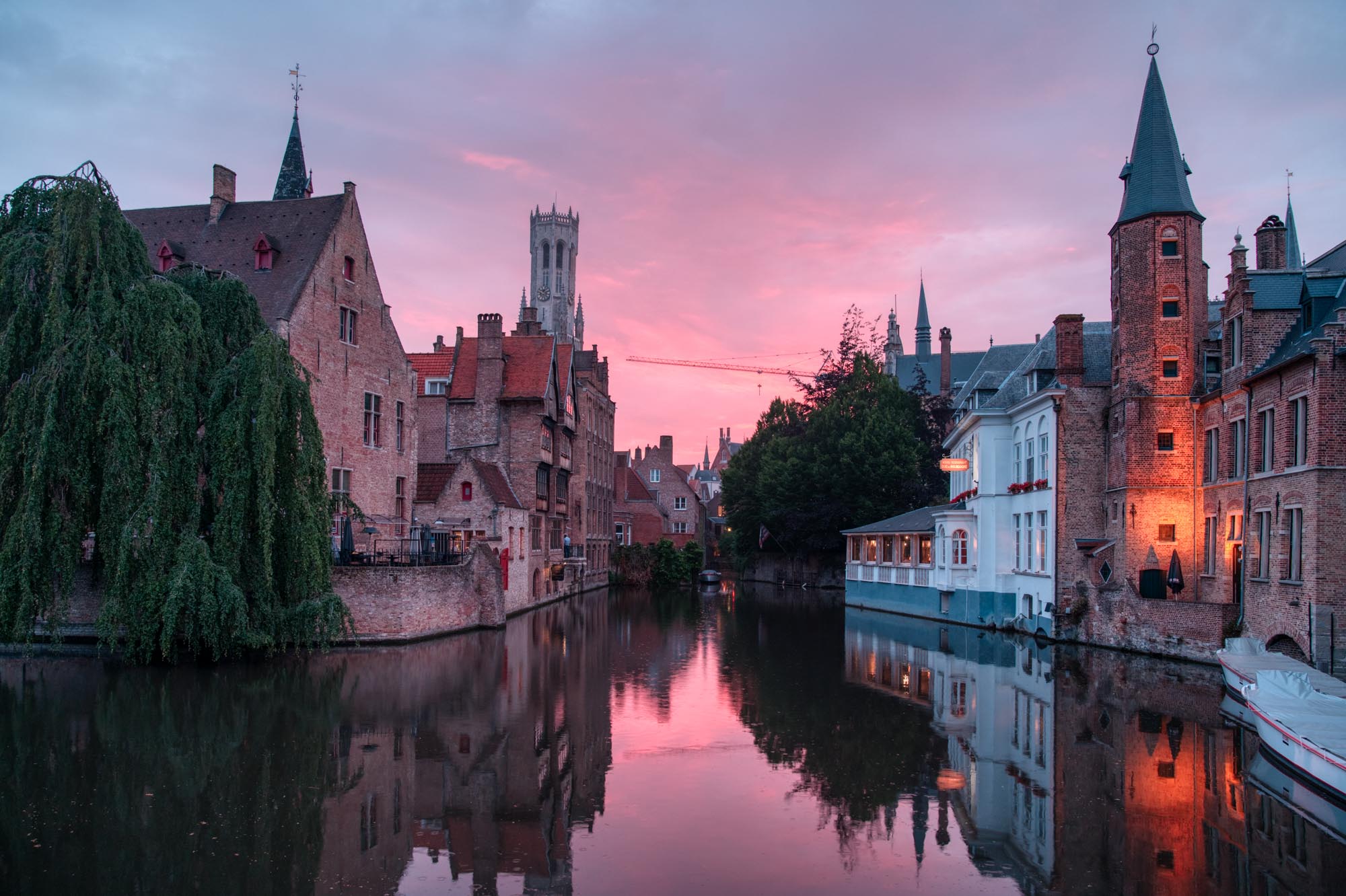

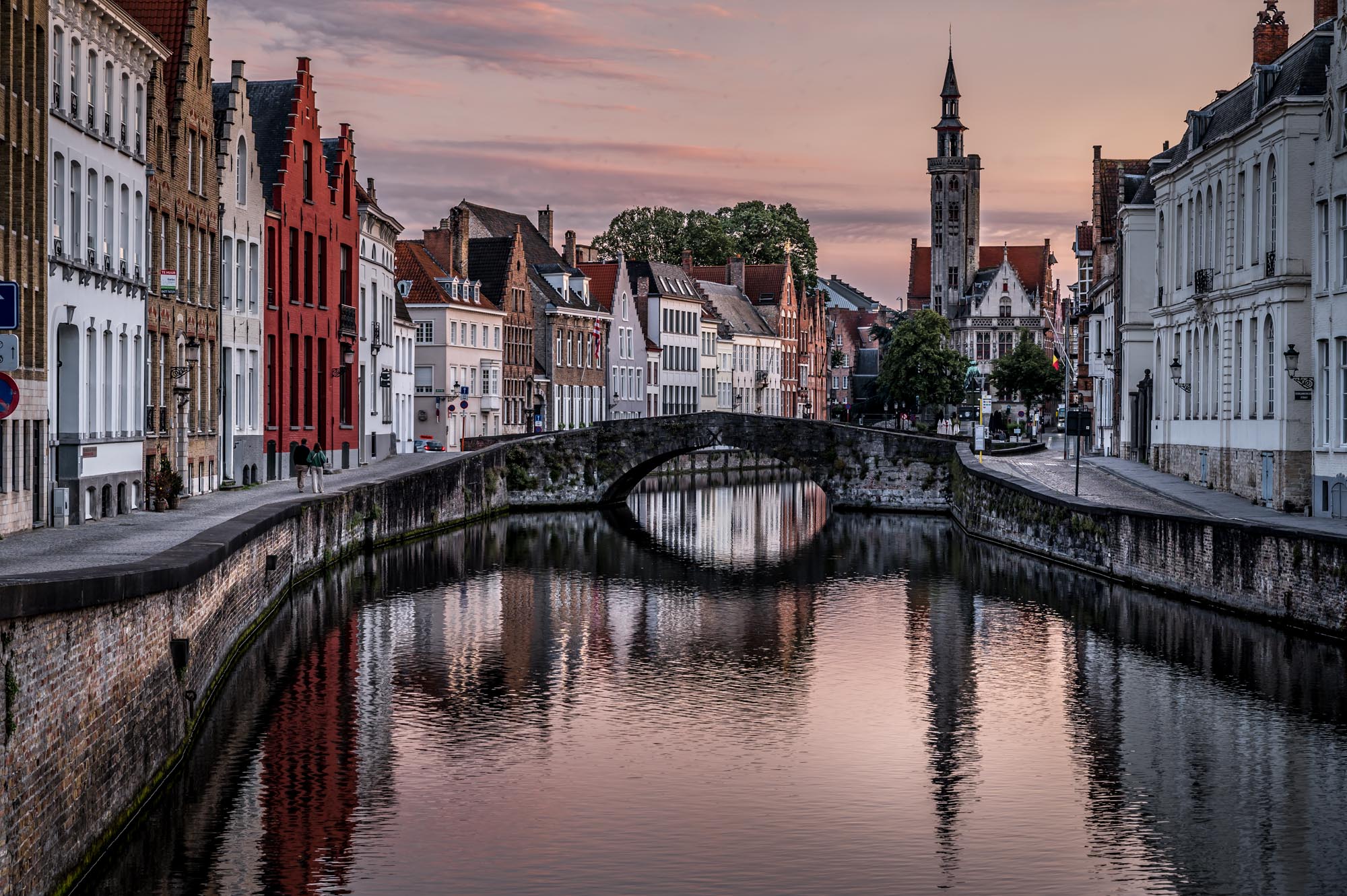

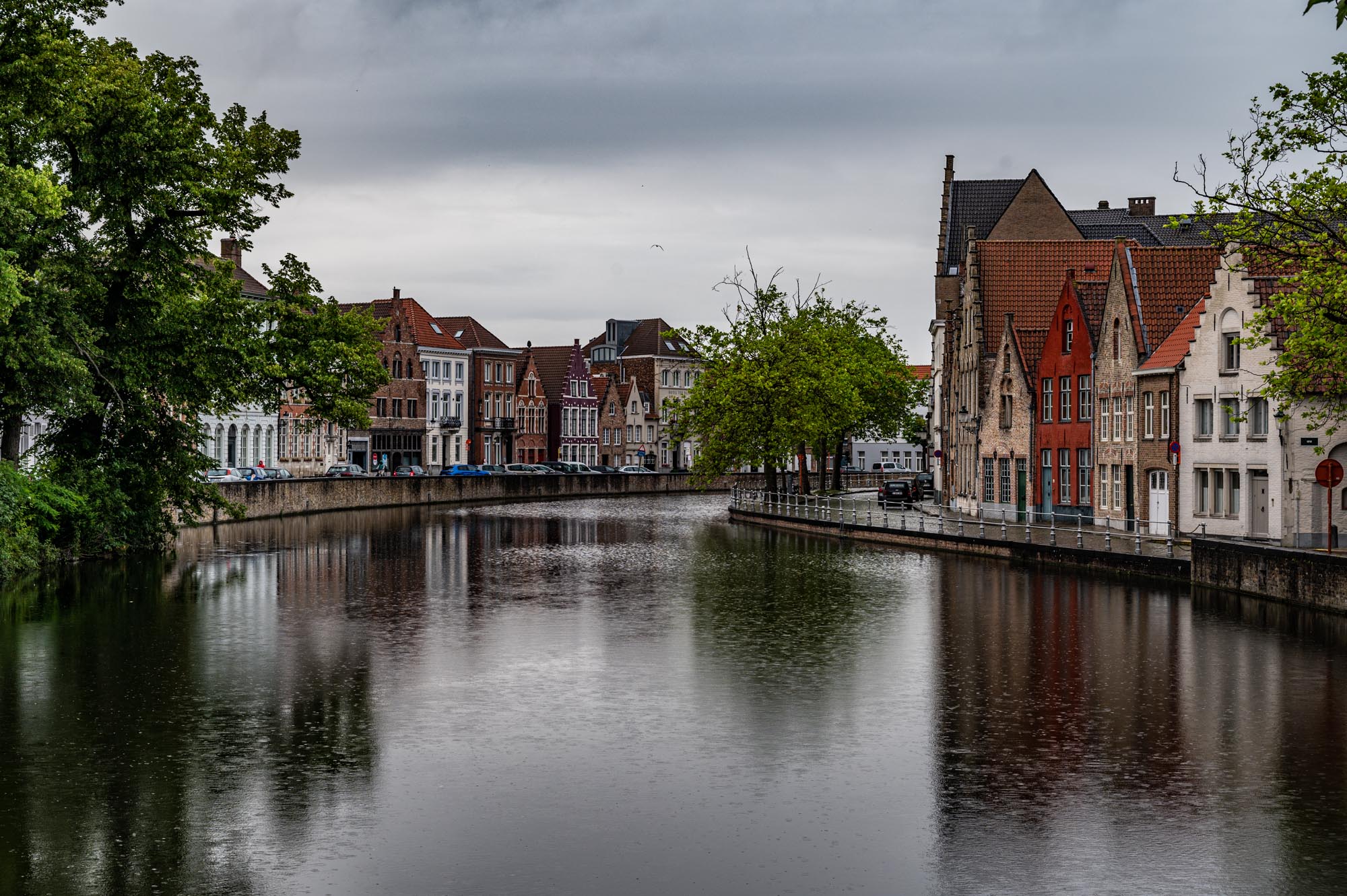


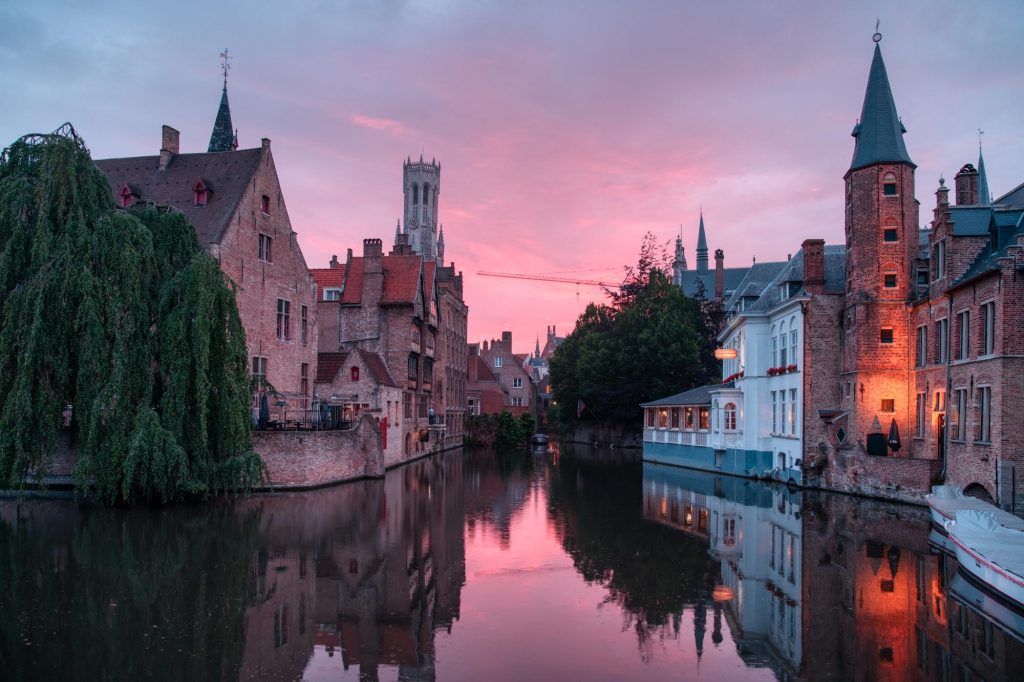
Leave a Reply